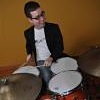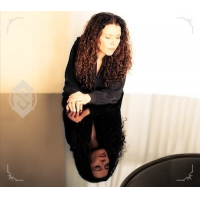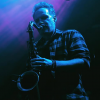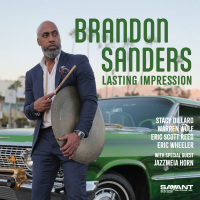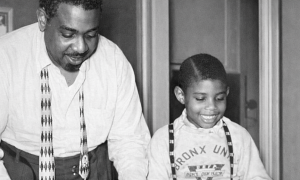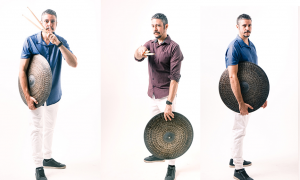Home » Jazz Articles » Interview » Mark Guiliana: Emulating The Source
Mark Guiliana: Emulating The Source
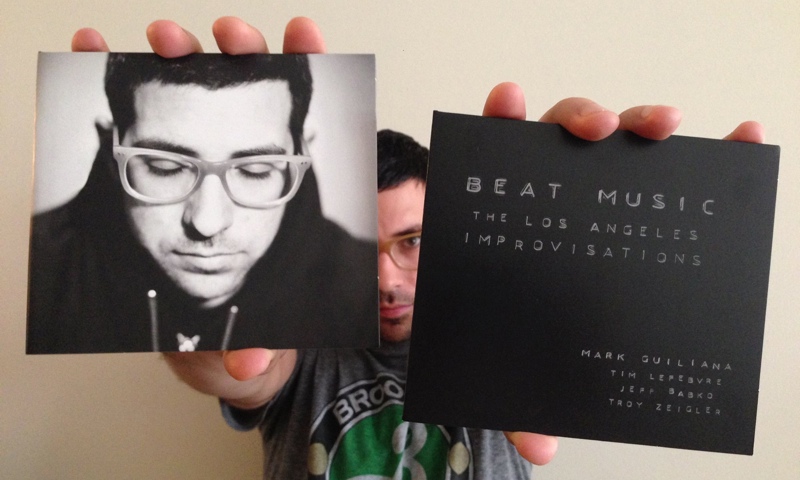
It’s much more about trying to interpret the original source material in my own way. If drummers do this naturally, then we all come out with our own slightly different versions of these emulations.
—Mark Guiliana
All About Jazz: I have to admit that I wasn't too familiar with your work until I saw you play with Brad Mehldau at S.P.A.C.E. last year. The whole "Brooklyn Duo" idea seems to be popular among indie rock artists and hip hop outfits, but has been slow to catch on in the jazz world. Why do you feel jazz artists are reluctant to embrace duo collaborations, especially amongst rhythm section instrumentalists?
Mark Guiliana: There are definitely fewer examples among rhythm section instrumentalists, and there are a few dual situations amongst lead instrumentalists that I've enjoyed over time. However, when one of the two elements happens to be drums, by definition the other element is responsible for the harmony and melody. Our situation is an electronic configuration that allows Brad to be the bassist, the accompanist, and the soloist at the same time. So, obviously he's carrying a lot of weight. The technology allows him to do so in a way that we're used to hearing from a larger ensemble, and that's the reason it works in our situation. I don't really have to change the way I play except in very subtle ways. I'll fill more space at times or become aware of the space that's available. Often times, there will be more space because there's just two of us. But really I'm just playing the way I hear the music.
For him it's a much bigger leap into new territory. I think it goes without saying that he's an incredible musician, and he brings his language to that electronic template. It's pretty exciting. For me it's funny, because sometimes I'll find myself with my eyes closed on stage just being in the moment. I'll hear Brad introduce this new voice as we're playing and I'll open my eyes and say, "Where's this coming from?" There's already a bass line, maybe some harmony happening, and there's a solo, and somehow he's using one of those voices as well as space to create another texture. It's pretty cool.
AAJ: Was the Mehliana collaboration between you and Brad mutual, or did one of you enlist the other to realize a personal artistic goal?
MG: It was mutual. Technically it's a world that I've been living in a little longer than Brad. My world has been electronic instruments as well as live band over the past decade, really a lot of electronic influences, while Brad's output has been mostly acoustic. We met years back, I don't remember exactly when, but we bumped into each other on the road, became friendly and talked casually about playing together. He came to see an earlier version of my band play in New York one night, and after that we decided to form the duo. It made more sense to go the electronic direction so that we could meet in the middle, between our influences. He had done playing like this before—I later found out that in High School he had done some duo work with a Mini-Moog bass and drummer. So, he had this organic sound inside his brain, but had never really explored it since.
The template was also informed by the fact that if Brad were to play bass lines on piano, these lines would be less effective in creating a larger ensemble of sound. We more or less agreed on the instrumentation, and the sonic template and from there it became a balance of playing, interacting and learning about each other musically.
AAJ: John Riley was the subject of my first article for the Drummer to Drummer column and I know you studied with him at William Paterson University. Can you relate to me a particularly memorable lesson or educational experience that you had with him?
MG: It would be difficult for me to point out one moment, the reason being that all of the moments were incredible. I grew up in New Jersey and he lives upstate in New York, and I began studying with him when I was a senior in High School. I would drive up to his house once a month and take a lesson. After graduating, I continued studying with him at William Paterson University for a year. At that moment in my life I was extremely impressionable, like a sponge. Really open. I wasn't exactly sure about where to go artistically, but I was very, very hungry so he was the perfect teacher for me. He encouraged me to explore and he challenged me as both a musician and a drummer. I really feel like studying under him was my most compressed and extreme progression.
Looking back on it now (I didn't realize it at the time) those years spent with him were a real burst of improvement in my learning. What I value most (and this is something I try to do every time I sit down to play music), is the ability to incorporate all of these experiences. He would draw from a wide variety of sources to deliver the information. If we were working on odd meters, or I would have to play a difficult song in one of my ensembles in school, I would pursue a jazz application in a way that was comfortable to me. However, in our lessons he would incorporate traditional Indian music, tabla etc. Things like that.
AAJ: I understand what you mean. I had a chance to study with him a couple of times when he came down to UNT. I felt like there was an arc to his lessons. There was space for improvisation within them, but there is a deliberate progression in the way he teaches.
MG: He's amazing.
AAJ: So—I'm going to assume that Jojo Mayer has been a big influence on your playing. Can you talk about some of your other influences and how they've impacted your musical style?
MG: Sure—but I'm just curious, he is an influence of mine, but I'm curious as to what makes you think that...
AAJ: The Sabian video mostly. I'm a big fan of Nerve and that kind of drum and bass acoustic break beat stuff...
MG: Yeah, Jojo's definitely been an influence. I've been lucky to have him as a friend and we've spent a lot of time together. From time to time I'll have some technical questions for him. When I'm re-evaluating my technique I'll run things by him and he always helps me out, but more so in a general more conceptual way. He and Zach Danziger were the first two guys that I saw emulating electronic music or programmed music in a live setting.
Aside from the details of the playing, the music has been about the concept, the production element, and the approach. It's an intimidating task to try to emulate some of the programmed music, and seeing these guys pulling it off live in an exciting, musical way really gave me the courage to pursue this road. I still look to them as sources of inspiration, but more importantly, their sources of inspiration. The reason they are so convincing in the way they play their music, is because they've really done their homework. They truly are historians in this field.
This field, albeit with few exceptions, does not feature a drummer performing. It's almost entirely samples and programming, so it was never my intention to cop what Jojo was playing. If I had done this, I'd already be a generation removed from the source. It's tricky because it's cool, really exciting stuff that he's playing, however it's much more about trying to interpret the original source material in my own way. If drummers do this naturally, then we all come out with our own slightly different versions of these emulations. Those guys pointed me to original source material like Squarepusher, Aphex Twin, and Photek. I really tried to immerse myself in those recordings and tried to find my own way in that music.
Was your question about the other drumming heroes I have, because I could give you that, too.
AAJ: Yeah, sure!
MG: A short list would be guys like Chad Smith and Dave Grohl. They were the reason I started playing drums as a teenager, while watching MTV. I still love that music and hold it dear to my heart. Later, I immersed myself in jazz. So, Tony Williams, Max Roach and Elvin Jones, Art Blakey, Philly Joe Jones, Roy Haynes—the list goes on. I really dove head first into that world. When I was in college and going to check out a lot of music in New York, I got to hear drummers like Jim Black, Jeff Ballard, Joey Baron, Dan Weiss, Dave King, and Bill Stewart. Those were the guys I was checking out all the time. It was really special to see them play and be in the front row at every gig. Each experience was like a lesson. That's a short list of drumming heroes, and, oh yeah—you're going to see Steve Gadd mixed in there as well.
AAJ: I'm not sure how long you've been with Sabian or what your relationship is with them. The reason I ask is you seem to prefer kind of a dry, trashy sound in your cymbals. I was wondering if Sabian was a conscious choice for you and if you could talk about your setup and the sound that you've developed.
MG: I've been with Sabian since about 2006 and I'm humbled by the relationship I have with them. They've been really nice to me, and I had a chance to go through the factory a couple of years ago to work on some stuff. We have plans for me to go there for another trip later this year. I've also been collaborating with Jo Jo, in order to promote his cymbals, and it's been a very productive, inspiring relationship.
I've always found the sounds I was looking for with Sabian. I do like dark sounding cymbals for sure, and the achieved the short trashy sounds with different combinations of stacks. They already have some mini hi-hat combinations in the catalog, but I've been collaborating with them on some prototype designs as well. Regarding ride cymbals, I have some thinner versions of the Artisan line that give a slightly darker tone. I play a wide variety of music, and I have WAY more cymbals than I need. However I'm always changing my set up from gig to gig. Night after night I'm trying to evaluate the best combination for that music. I found that all my cymbals do have a place in the music I play, and it's process of assessing the right combination.
Sabian has been very generous and open minded, and I feel that attitude is invaluable, especially with a cymbal company. Drums can be manipulated with head choice or muffling, but cymbals, it's whatever it is. You can manipulate a cymbal with a rivet or some tape or something, but you have far fewer options if you want to change the sound once it's been created.
AAJ: So, for a last question—what's next? Do you have any plans to record again with Avishai Cohen? Can you talk a little about Beat Music Productions, any touring plans?
MG: No plans to record with Avishai in the near future. What's next for me? I have two of my own albums coming out and I'm starting my own label (Beat Music Productions). These albums will come out soon. I'm playing gigs around them with two different ensembles that both have an electronic influence. I also have an acoustic quartet that I wrote repertoire for, and we're playing a bunch of gigs in the fall. I want to record this group by the end of the year, and put the album out the following year.
Brad and I have been touring consistently, and I have two gigs with Donny McCaslin and his band coming up as well. We recorded Donny's new record a few months ago, I'm not sure when that will be coming out. So, I'll be with Donny a little bit and with Jason Lindner's group a little bit as well. I'm doing a workshop series this Fall in New York City, two Saturdays each month, where I'm presenting different topics and including different guests. So, I've got my stuff spread out, but it feels good to be releasing new music while I'm building this new company as well.
Tags
Mark Guiliana
Interview
Ben Scholz
United States
Illinois
Chicago
brad mehldau
John Riley
S.P.A.C.E.
New Jersey
Jojo Mayer
Chad Smith
Tony Williams
Max Roach
Elvin Jones
Art Blakey
Philly Joe Jones
Roy Haynes
New York
Jim Black
Jeff Ballard
Joey Baron
Dan Weiss
dave king
Bill Stewart
Steve Gadd
Avishai Cohen
Donny McCaslin
Jason Lindner
New York City
PREVIOUS / NEXT
Mark Guiliana Concerts
Support All About Jazz
 All About Jazz has been a pillar of jazz since 1995, championing it as an art form and, more importantly, supporting the musicians who make it. Our enduring commitment has made "AAJ" one of the most culturally important websites of its kind, read by hundreds of thousands of fans, musicians and industry figures every month.
All About Jazz has been a pillar of jazz since 1995, championing it as an art form and, more importantly, supporting the musicians who make it. Our enduring commitment has made "AAJ" one of the most culturally important websites of its kind, read by hundreds of thousands of fans, musicians and industry figures every month.

